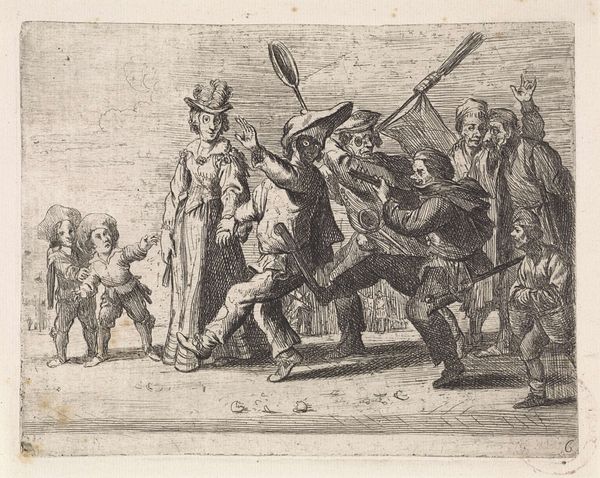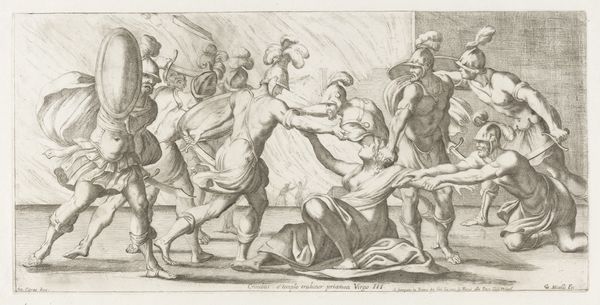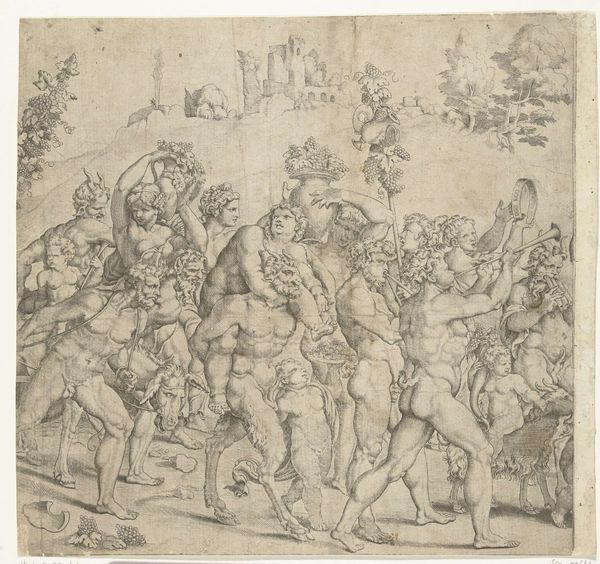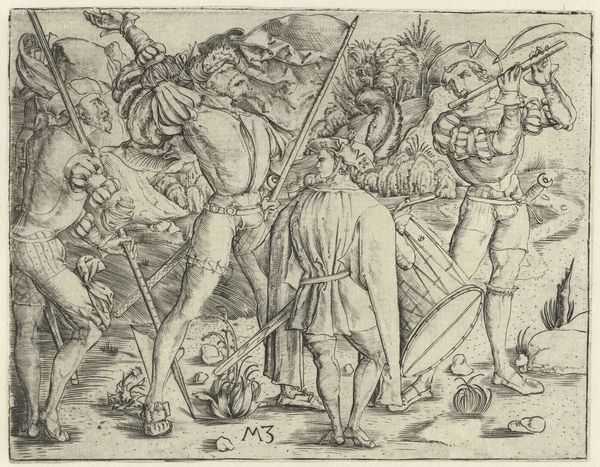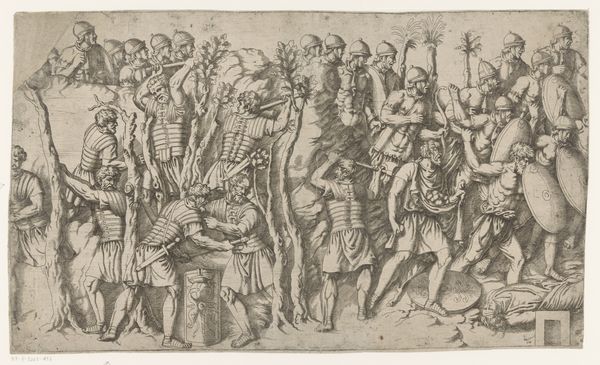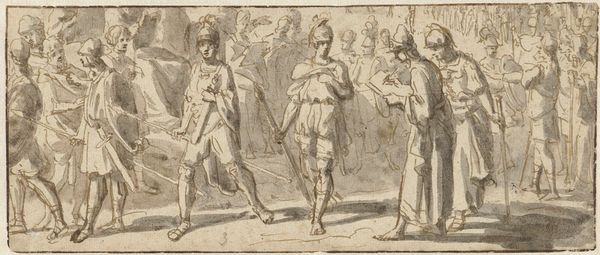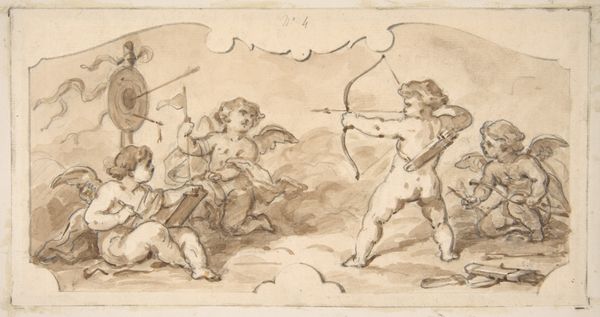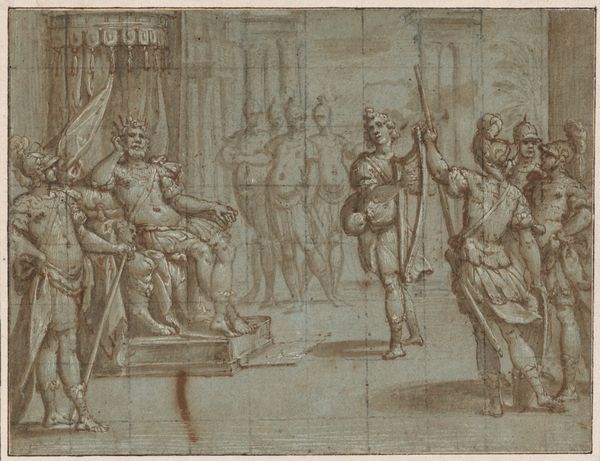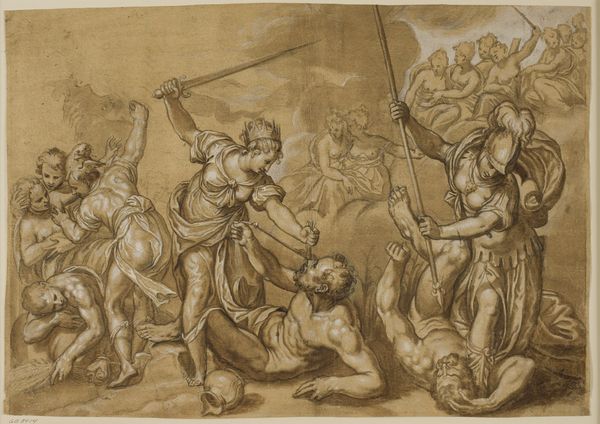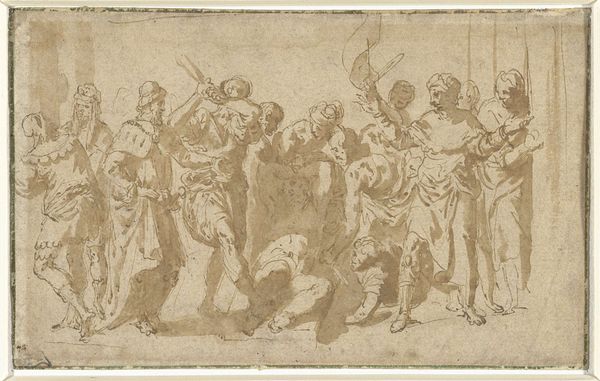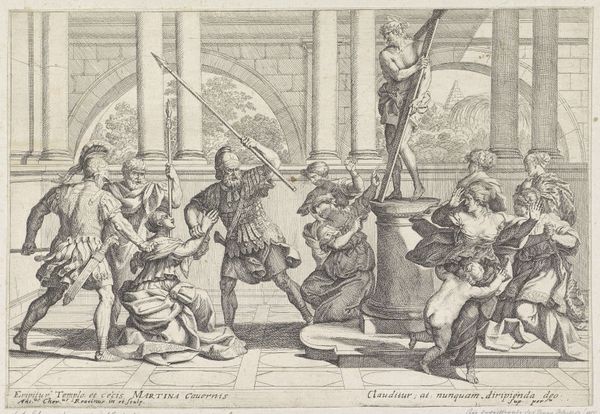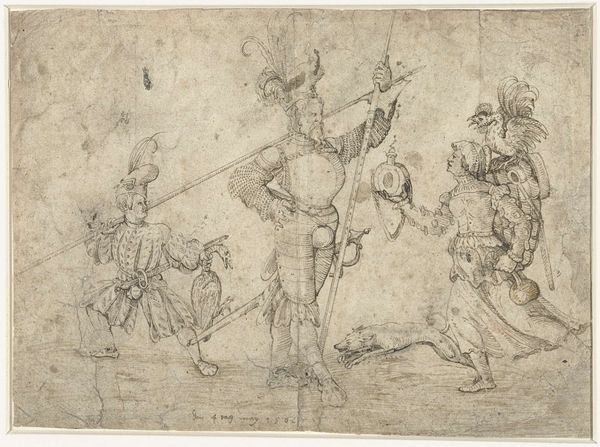
drawing, print, ink
#
drawing
#
narrative-art
# print
#
figuration
#
11_renaissance
#
ink
#
history-painting
#
academic-art
#
italian-renaissance
Dimensions: 4-13/16 x 7-1/2 in. (12.3 x 19 cm)
Copyright: Public Domain
Editor: Here we have "Soldiers Running," an ink and possibly print drawing made sometime between 1500 and 1600 by an anonymous artist. It's currently at the Metropolitan Museum of Art. The figures look so energetic, caught in a moment of frantic action. I am curious; what visual elements stand out to you in this drawing? Curator: The dynamism, as you note, is quite compelling. Observe how the artist uses line—thin and broken in places, thicker and more definite in others—to suggest movement. Consider, too, the tonal variations achieved through hatching and cross-hatching. The artist skillfully employs these techniques to model the figures and create a sense of depth despite the lack of color. Note how the positioning and contrapposto of the bodies and limbs gives motion, but does the artist succeed? Editor: I do see the cross-hatching now, it is interesting. However, doesn’t the flatness of the figures and shallow depth flatten the dramatic intent? How can we consider the overall impression to see dramatic form with so little information and visual data? Curator: That perceived "flatness" might, ironically, heighten the intensity. Focus instead on the use of line. Its repetition generates energy. And examine the composition. Is it not built on the interplay between the receding depth in space, where the lines blur slightly to imply shadow, and the figures' angular bodies, jutting into our space, which brings this picture into relief. The artist seems to seek form from flatness. What have you gathered? Editor: I’m really struck by the formal properties and can definitely see what you mean by lines bringing forms out. Now, thinking about the tension between flatness and form gives me a new way of viewing this drawing.
Comments
No comments
Be the first to comment and join the conversation on the ultimate creative platform.
